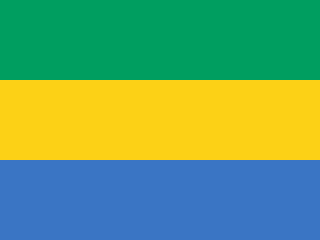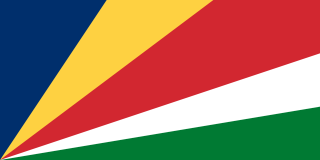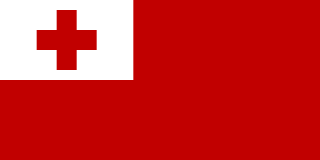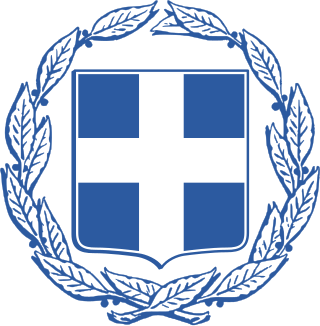
The national flag of France is a tricolour featuring three vertical bands coloured blue, white, and red. It is known to English speakers as the Tricolour, although the flag of Ireland and others are also so known. The design was adopted after the French Revolution, where the revolutionaries were influenced by the horizontally striped red-white-blue flag of the Netherlands. While not the first tricolour, it became one of the most influential flags in history. The tricolour scheme was later adopted by many other nations in Europe and elsewhere, and, according to the Encyclopædia Britannica has historically stood "in symbolic opposition to the autocratic and clericalist royal standards of the past".

The national flag of the Principality of Liechtenstein consists of two horizontal bands, one blue and one red, charged with a gold crown in the canton. In use since 1764 and officially enshrined into the nation's constitution in 1921, it has been the flag of the principality since that year. The crown was added to the flag in 1937, after the country discovered at the Summer Olympics held the previous year that their flag was identical to the Haitian civil flag.

The national flag of Greece, popularly referred to as the "turquoise and white one" or the "azure and white", is officially recognised by Greece as one of its national symbols and has 5 equal horizontal stripes of blue alternating with white. There is a blue canton in the upper hoist-side corner bearing a white cross; the cross symbolises Eastern Orthodox Christianity. The blazon of the flag is Azure, four bars Argent; on a canton of the field a Greek cross throughout of the second. The official flag ratio is 2:3. The shade of blue used in the flag has varied throughout its history, from light blue to dark blue, the latter being increasingly used since the late 1960s. It was officially adopted by the First National Assembly at Epidaurus on 13 January 1822.

The flag of Bulgaria is a tricolour consisting of three equal-sized horizontal bands of white, green, and red. The flag was first adopted after the 1877–1878 Russo-Turkish War, when Bulgaria gained de facto independence. The national flag at times was charged with the state emblem, especially during the communist era. The current flag was re-established with the 1991 Constitution of Bulgaria and was confirmed in a 1998 law.

The prime minister of the Hellenic Republic, colloquially referred to as the prime minister of Greece, is the head of government of the Hellenic Republic and the leader of the Greek Cabinet.

The national flag of Benin is a flag consisting of two horizontal yellow and red bands on the fly side and a green vertical band at the hoist. Adopted in 1959 to replace the French Tricolour, it was the flag of the Republic of Dahomey until 1975, when the People's Republic of Benin was established. The new regime renamed the country and changed the flag to a green field with a red star in the canton. This version was utilized until multi-party democracy was re-established in 1990, coinciding with the Revolutions of 1989. The new government promptly restored the original pre-1975 flag.

The national flag of Botswana consists of a sky blue field cut horizontally in the centre by a black stripe with a thin white frame. Adopted in 1966 to replace the Union Jack, it has been the flag of the Republic of Botswana since the country gained independence that year. It is one of the few African flags that utilises neither the colours of the Pan-Africanist movement nor the colours of the country's leading political party.

The national flag of the Republic of the Congo consists of a yellow diagonal band divided diagonally from the lower hoist-side corner, with a green upper triangle and red lower triangle. Adopted in 1959 to replace the French Tricolour, it was the flag of the Republic of the Congo until 1970, when the People's Republic of the Congo was established. The new regime changed the flag to a red field with the coat of arms of the People's Republic in the canton. This version was utilized until the regime collapsed in 1991. The new government promptly restored the original pre-1970 flag.

The flag of Gabon is a tricolour consisting of three horizontal green, yellow and blue bands. Adopted in 1960 to replace the previous colonial flag containing the French Tricolour at the canton, it has been the flag of the Gabonese Republic since the country gained independence that year. The design of the present flag entailed the removal the Tricolour and the widening of the yellow stripe at the centre.

The flag of Seychelles was adopted on 8 January 1996. The current flag is the third used by the country since its independence from the United Kingdom on 29 June 1976. The colours used in the current flag are the official colours of two of the country's major political parties: the Seychelles People's United Party and the Seychelles Democratic Party.

The flag of Tanzania consists of a Gold-edged black diagonal band, divided diagonally from the lower hoist-side corner, with a green upper triangle and light blue lower triangle. Adopted in 1964 to replace the individual flags of Tanganyika and Zanzibar, it has been the flag of the United Republic of Tanzania since the two states merged that year. The design of the present flag incorporates the elements from the two former flags. It is one of a relatively small number of national flags incorporating a diagonal line, with other examples including the DR Congo, Namibia, Trinidad and Tobago and Brunei.

The flag of Tonga consists of a red field with a white canton charged with a red couped cross. Adopted in 1875 after being officially enshrined into the nation's constitution, it has been the flag of the Kingdom of Tonga since that year. The constitution stipulates that the national flag can never be changed.

The flag of The Gambia is the national flag of The Gambia. It consists of three horizontal red, blue and green bands separated by two thin white lines. Adopted in 1965 to replace the British Blue Ensign defaced with the arms of the Gambia Colony and Protectorate, it has been the flag of the Republic of the Gambia since the country gained independence that year. It remained unchanged throughout the Gambia's seven-year confederation with Senegal.

The coat of arms of Greece or national seal of Greece comprises a white Greek cross on a blue escutcheon, surrounded by two laurel branches. It has been in use in its current form since 1975. Prior to the adoption of the current coat of arms, Greece used a number of different designs, some of which were not heraldic; the first heraldic design was introduced in 1832 and its main element, the blue shield with the white cross, has been the base for all other national coats of arms since then. The design is a heraldic representation of the Greek national flag adopted in 1822, which featured a white cross on a blue field.

The currently deposed Greek royal family was the ruling family of the Kingdom of Greece from 1863 to 1924 and again from 1935 to 1973. The family is a branch of the Danish royal family, itself a branch of the House of Glücksburg. Upon its accession to power, It replaced the House of Wittelsbach that previously ruled Greece from 1832 to 1862. The first monarch was George I of Greece, the second son of King Christian IX of Denmark. The current head of the family is Pavlos, who assumed the role upon the death of his father, former King Constantine II on 10 January 2023. With the sole exception of Aspasia Manos, the consort of King Alexander, her descendants and Marina Karella, Consort of Prince Michael and their descendants, none of the members have been ethnically Greek.

The Second Hellenic Republic is a modern historiographical term used to refer to the Greek state during a period of republican governance between 1924 and 1935. To its contemporaries it was known officially as the Hellenic Republic or more commonly as Greece. It occupied virtually the coterminous territory of modern Greece and bordered Albania, Yugoslavia, Bulgaria, Turkey and the Italian Aegean Islands. The term Second Republic is used to differentiate it from the First and Third republics.

The flag of Sint Maarten consists of a white triangle situated at the hoist charged with the constituent country's coat of arms, along with two horizontal bands of red and blue. Adopted in 1985 shortly after the territory was granted a coat of arms, it has been the flag of Sint Maarten since 13 June of that year. Since the dissolution of the Netherlands Antilles on 10 October 2010, it has been the sole flag used in the constituent country.
Hellenic Seaways is a Greece-based ferry company founded in 1984. Hellenic Seaways is a subsidiary of Attica Group along with Blue Star Ferries and Superfast Ferries.

Legislative elections were held in Greece on 7 July 2019. The elections were called by Prime Minister Alexis Tsipras on 26 May 2019 after the ruling Syriza party lost the European and local elections. They were the first national elections since the voting age was lowered to 17, and the number of parliamentary constituencies was increased from 56 to 59. Athens B, the largest constituency before the 2018 reforms, with 44 seats, was broken up into smaller constituencies, the largest of which had 18 seats.





















